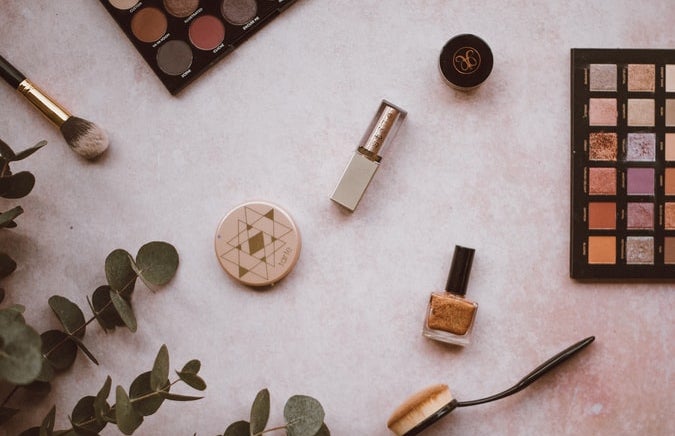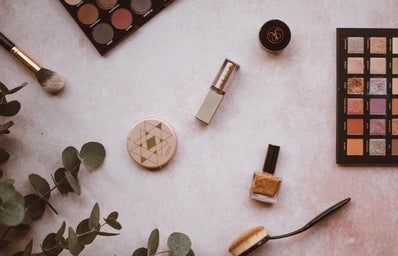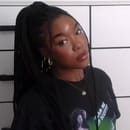The Growing Beauty Industry
Every decade, we’ve collectively watched makeup trends and styles change over time. The shimmery neutral looks of the 90s, the bright blush, glossy looks of the 2000s, the bold brows, full glam of the 2010s, and now the satin glowy skin looks that are seemingly taking over the 2020s. But, makeup trends haven’t been the only thing that has changed in the beauty industry, and neither has the approach to makeup and cosmetics as a whole. With the increase of makeup tutorial videos on the internet created by various beauty influencers, people sitting at home could learn how to do their makeup for free, while also gaining access to knowledge about products before buying them. This has moved the beauty industry to become as prominent and successful as it is today. Now, there are hundreds of different brands of makeup and cosmetics on the market that range in quality, price, and value, giving consumers so many beautiful options when shopping for makeup. But, even with its vast variety and millions of users, the beauty industry still has a big problem when it comes to makeup… Inclusivity.
Inclusivity in Makeup…or Lack of
Imagine walking into a cosmetics store to purchase products to revamp or refresh your makeup collection and having a hard time finding your shade of foundation and concealer, or not being able to find a lipstick or blush color pigmented enough to compliment and show up on your skin. This has been the reality for Black women for so many years and it is still the reality that Black people live in today along with other darker-skinned people of color. For as long as makeup has been gaining an increased level of popularity, it has also been leaving darker-skinned people behind. Along with makeup brands, makeup artists have also failed darker-skinned individuals when it comes to inclusivity in the makeup industry. How can licensed, employed, and working makeup artists continue to fail when doing makeup on dark skin? It’s ridiculous and quite frankly it has gone on for far too long.
Long-time beauty influencer and content creator, Jackie Aina has constantly been vocal about the lack of shade ranges for darker-skinned people. “I do not like whenever I’m talking about this topic and people are like, ‘You shouldn’t be begging for inclusion. You should just be supporting your own,'” Jackie stated at the beginning of one of her 2016 Youtube videos; “The Worst Beauty Brands EVER For POC!” Aina has been and continues to be a champion for inclusivity in makeup brands as her continued expression of disappointment in makeup brands, Jackie Aina landed a collaboration with Too Faced to include a wider shade range of foundations in 2017. Once again on full display, Black women have to fight tooth and nail for equal treatment in an industry that is said to be for “any and everyone.”
While the beauty industry has made strides since 2017, there still is a major disparity in the amount of lighter shades of beauty products in comparison to the amount of darker shades. Makeup brands will often release a line of an ample amount of foundation shades, but the majority of the shades will be catered to fairer skin and tan skin, while a much smaller portion of the shades may be suitable for dark and deep dark skin. When formulating and releasing shade ranges for darker skin many companies fail to take into account the various undertones of dark and deep dark skin which would lead to more expansive and more inclusive shade ranges. It’s extremely upsetting that in 2023 there are still makeup brands who’d shade ranges do not accommodate darker skin tones. Golloria is another amazing Black creator who talks frequently about the lack of inclusivity in the makeup industry. In a video posted on her Tiktok on January 7th, she reviewed the darkest shades of a new Essence foundation, and surprise surprise.. the shades were not dark at all… “It is 2023 and tone inclusivity is the bare minimum.”
Inclusivity is More Than What’s In The Aisles
When Black and dark-skinned people of color are calling for more inclusivity in the beauty industry, they are referring to more than just the products on the shelves. Yes, there is a need for wider shade ranges and we should continue to talk and be vocal about it until that changes, but the plight of dark-skinned people is so much more than that.
Oftentimes, Black and dark-skinned people of color are left out of the conversation or just simply ignored when it comes to the beauty industry party their being a part of the conversation is exactly what the industry needs. Of course, it is hard for brands to cater products to certain people if they never hear or listen to their perspectives. Only between 4 and 5 percent of all employees working in the United States beauty industry are Black and there is an even smaller percentage of Black people in leadership positions, and quite frankly it shows. Black consumers are 2.5 times more likely to be dissatisfied with their beauty purchases as opposed to their non-Black counterparts. This is due to a lack to an overall lack of knowledge about what beauty products would be suitable for Black consumers. Only 13% of Black people feel as if sales associates make knowledgeable recommendations for Black customers and 23% of Black people think that sales associates have been able to have sophisticated conversations about products for Black consumers. Disappointing.
Marketing is another area of the beauty industry that fails to be inclusive. How can companies say that their products are for everyone when they only show white and lighter-skinned people in their commercials, ads, and campaigns? When people look at beauty advertisements, they want to see people who look like them and they want to see people that reflect what the world around them looks like. According to Mintel market research company, 63% of Americans are inspired by beauty brands that show diversity in advertising and 68% of consumers revealed that they would like to see more diversity in advertising for beauty products. There also seems to be a correlation between purchasing practices and the amount of inclusivity a brand displays, with 47% of people admitting that they looked for and bought from inclusive brands in the last year.
The fact of the matter is people want to see more diversity in the beauty industry because beauty in itself is diverse. There are so many ways to be beautiful and the marketing in the beauty industry should reflect that. We all are aware that beauty comes in every shade, but the marketing of products along with the products themselves should tell that story.
Makeup Brands That are Getting it Right
While speaking about the lack of inclusivity within the beauty industry, it is important to note that there ARE brands that have been pushing the envelope when it comes to shade accessibility. I think these brands understand that if makeup is for everyone then it really should be for everyone.
Maybelline New York: This brand is a very popular drugstore brand of makeup whose shade range is comprised of 40 (and counting!) shades.
Morphe: In 2019, Morphe launched it’s Morphe Fluidity Full Coverage Foundation which has a whopping 60 shades.
Pat Mcgrath Labs: One of the more luxurious and high end foundations on the market which comes in 36 shades, and takes the various undertones into account.
Fenty Beauty: Rihanna’s brand has and continues to woo everyone as there were 40 shades available upon it’s initial release with many of the darker shades selling out first.
Estee Lauder: They have an award winning foundation on their hands that is available in 42 shades, showing brands that inclusivity is possible.
Anastasia Beverly Hills: Their first foundation every released, is available in 50 shades and their formulas also account for the various undertones within each shade range.
These brands stated are just a few makeup brands that have done the right thing by including such a vast amount of shade ranges within their products. These brands are showing the industry that inclusivity is not hard and it should be the bare minimum. Anyone should be able to walk into a cosmetics store and find a shade that coincides with their skin tone. No one expects perfection from any makeup brand on the market, just a sound effort towards including darker-skinned people in your product formulation and releases. The beauty industry IS a place for everyone, and when looking down any cosmetics aisle, that should be evident.


